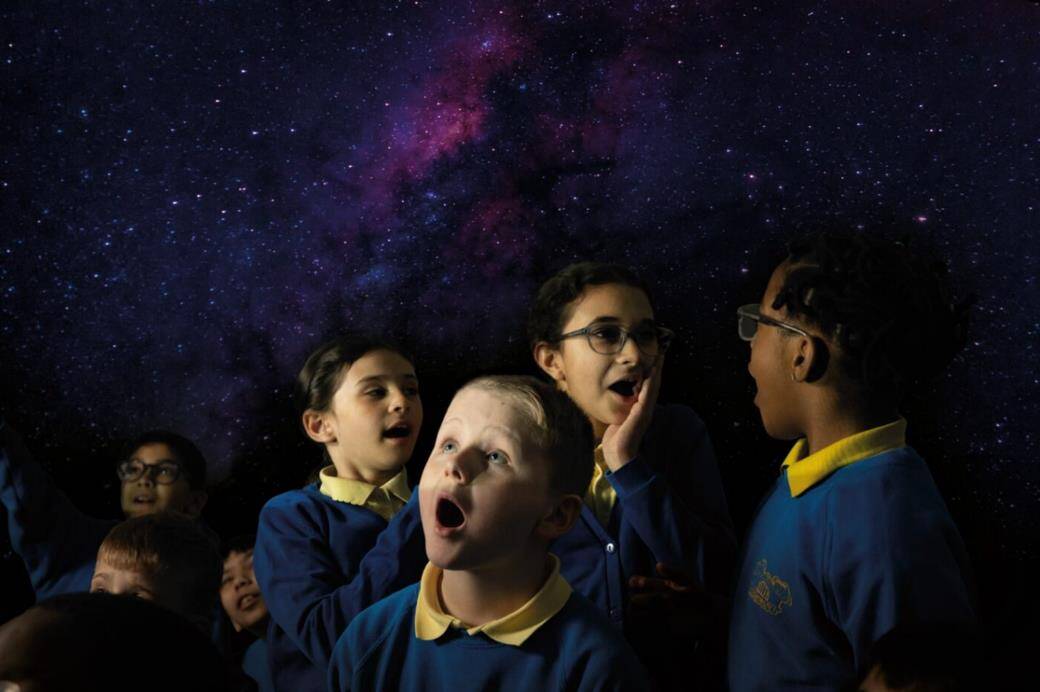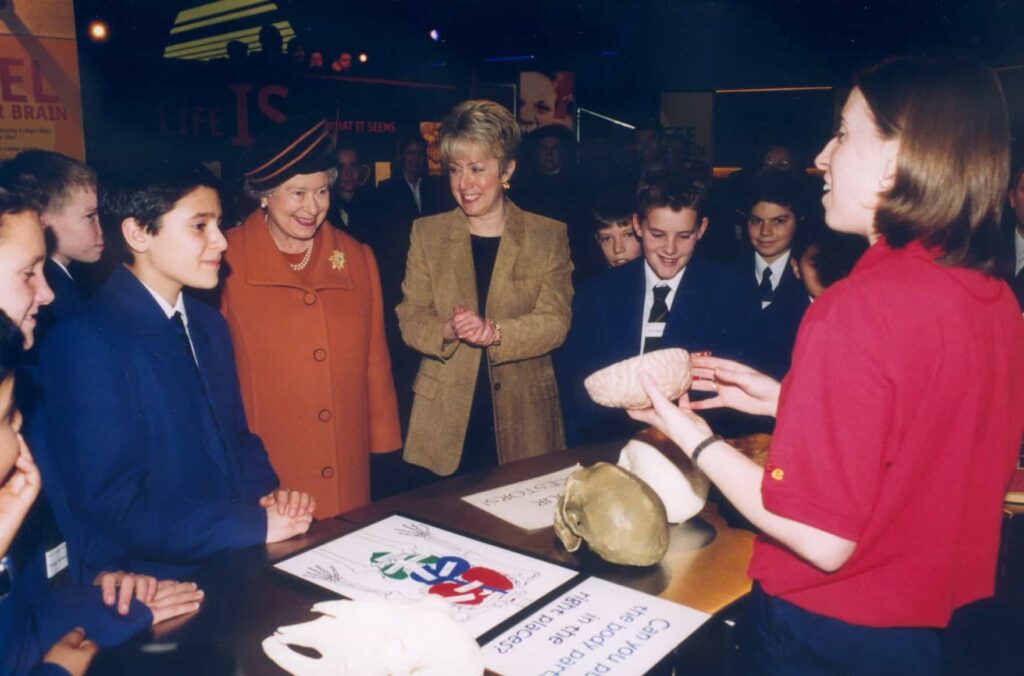
“There’s a big overlap, where our aims are shared. Life’s all about trying to inspire children into an interest and a love of science.” Geraldine Marais, Trust Secretary at the Edina Trust
The Edina Trust was founded in 2002 to support work which inspires children to take an active interest in science.
Life Science Centre has received more than a quarter of a million pounds of grant funding from Edina since 2007.
Edina’s interest in Life began when the Trust’s founder, the biochemist Professor Sir Edwin Southern, and its then-secretary geneticist Dr Sonia Morgan, were travelling through Newcastle to Edinburgh for a Trustee meeting.
They spotted Life’s buildings on the approach to Central Station and reached out to find out more about the centre and its purpose.
Since those first meetings, Edina’s funding has primarily enabled outreach work with schools.
This started with one-off sessions where members of the Life team visited schools across the North East. The funding helped Life develop workshops, buy necessary resources, and run trial sessions with schools before rolling the programme out more widely.
A key characteristic of these programmes was they reached disadvantaged young people who might not otherwise engage with a science centre, including those in rural areas where accessibility is a problem.
Edina Trust Secretary Geraldine Marais explains that the problem being addressed is confidence and capacity for primary teachers.
“Primary school science doesn’t actually need to be that complicated, it’s more about teaching children to work scientifically and think scientifically.”
“There are certain areas in the national curriculum which require teachers to have a much more detailed knowledge,” Geraldine says, “and Life’s workshops tend to tackle areas of the curriculum the teachers say are difficult to teach. As a generalist primary school teacher, they would find it hard to deliver in those areas.”
Workshops focused on specific themes, including forces in space, electricity, and the maths of fossils and dinosaurs.
The idea was to introduce the concepts and do so in an interesting and engaging way, while – importantly – keeping things hands-on.
“For a session called dinomaths,” Geraldine explains, “they brought a dinosaur’s femur into schools and with the children, they worked out if that’s the length of the dinosaur’s femur, how big is the dinosaur.
“They talked it all through and they scaled it all up,” she continues, “and worked out how long it was from end to end, how big this dinosaur would be. And then the children measured out that distance in their school hall, but it didn’t fit in their school hall, it had to go out into the foyer and then it had to go out the front door.”
“It creates a memorable experience for children that’s hands-on, that they are involved in and it’s also a fun way of realising you should learn maths, because you need maths to solve things and to do science.”
These workshops continued with the support of Edina for several years, until the pandemic suddenly changed what was possible.
With schools no longer accepting visitors, the programme was paused, which gave an opportunity to review it.
“Life decided that although the workshops in schools have a good impact, they are a bit of a standalone event,” Geraldine says. “Even if you leave behind some teacher resources or links to good websites, there’s no real certainty that teachers manage to do any follow up work. It’s just a fun day for the kids.”
Longevity of impact is important to Edina’s Trustees, and so they welcomed efforts to turn a one-off workshop programme into a multi-engagement one.
Since 2021, Edina has supported Life with a year-long programme which centres around a visit to the science centre and a visit to school with a mobile planetarium, and also includes a classroom resource and a virtual chat with people working in science careers.
“They recruit scientists from the North East who can be role models,” Geraldine explains. “They talk about their love of science, about their job, about learning science at school, and field questions from the children.”
Since Edina’s first round of support in 2007, around 400 schools have been involved in workshops and projects delivered by Life, reaching around 10,000 students.
“There’s a big overlap, where our aims are shared,” Geraldine explains. “Life’s all about trying to inspire children to have an interest in, and a love of science, but maybe more than that, it’s about children who are benefiting from this programme whose life experiences might otherwise be quite narrow because of their own family circumstances.”
In this way, the work goes beyond science for its own sake and into influencing socioeconomic outcomes. The key in this area for Edina is the concept of ‘science capital’, which ties science to opportunity, and how to increase young people’s access to and awareness of science careers.
“Has a child ever talked to anyone who is a scientist?” Geraldine begins, “and what are the science resources they have to build their learning on?” “That’s not just physical resources,” she continues, “but what’s their science related understanding? Their attitudes to science? Do they have any social contacts with people who are scientists?”
The longevity of the relationship between Life and Edina is tribute to the effectiveness of Life’s outreach programmes, and the success of the multi-engagement programme means the scope of projects has grown in recent years, as Edina’s Trustees recognise the power of workshops which take place across several sessions with schools.
“It’s just about broadening horizons and letting children know what opportunities are out there,” Geraldine concludes, “and obviously the pupils are very young, but you might just sow a seed to continue to study to a higher level or to work in a STEM related career.”

